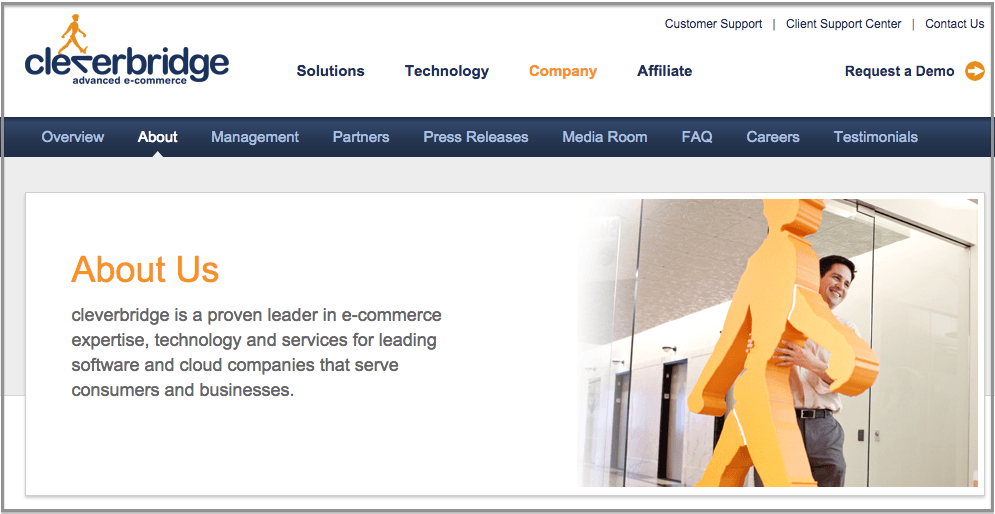(Editor's note: in a series of articles, tech.eu will be putting the spotlights on a number of European tech companies who've achieved success while bootstrapping the business.
First up is Cologne, Germany-headquartered cleverbridge, a global e-commerce software provider founded in 2005 that now has a team of over 280 employees and has been profitable since 2007.)
In 2004, Christian Blume (pictured below) – originally from Germany – worked at a tech company called Element 5, where he was responsible for business development and product management.
During that year, the firm was acquired by American competitor, Digital River, in what he considered to be “an unhealthy consolidation”.
After the exit, Blume wasn’t happy and decided to take the plunge into a new entrepreneurial adventure.
“I realized that working for an organization that was stock-listed, which had the organizational structures that you would expect from a company with a couple of hundred employees – well, my capabilities weren’t really being put to work like they should be,” Blume told tech.eu in an interview.

So Blume quit his job at Element 5, connected with a couple of others from the company who shared the same sentiment about the exit and began pursuing a new opportunity, which is now e-commerce technology and services provider cleverbridge.
After the embittered experience with Element 5, the four original co-founders of cleverbridge were adamant on powering the business without taking a penny of external funding.
“That was the biggest thing in the beginning,” recalled Blume, “We said, ‘We don’t need help from anybody outside we’ve got the cash available.’ We knew we’d probably have to downscale from our current standard of living to something that was a bit lower, but everyone was willing to do this – and that’s how we really got started.” And it seems to have worked out for them.
The cleverbridge trajectory
Since its founding in 2005, cleverbridge has grown to more than 280 employees across offices in Cologne (its headquarters), Chicago, San Francisco and Tokyo. The company, which offers e-commerce solutions for software/SaaS companies, has been profitable every year since 2007 and serves clients such as Dell, Corel, Acronis and Avira.
In 2013, it reportedly reached global annual sales of almost $450 million.
In an industry where it's easy to get lost in a litter of buzzwords and jargon, Blume gets down to the core about what cleverbridge is about:
“What we actually do is, we offer a complete full-fledged e-commerce solution for software and cloud companies. The simplest path that one could pursue with us, for example, is a company that has a website with a ‘buy’ button to a certain product. You press the ‘buy‘ button, and then everything that happens after the ‘buy’ button is a solution that we offer.”
Essentially, this means capturing the personal identifiable information, processing the transaction, delivering the product – or access to a product – that was purchased, as well as handling end-customer support related to any type of payment-related or download-related or accessibility-related items, he added.
“We’re not the technology support side of this,” Blume clarified about cleverbridge’s solutions.
The pros and cons of bootstrapping
For Blume, cleverbridge was the first time he’d embarked on the entrepreneurial path – and he admitted that it was challenging.
“We knew the people that we needed to get on board in order to get this started, and we knew they’d be willing to actually put in some money as well,” he said while recalling cleverbridge’s beginnings.
“We were pretty sure if we got the right team together, they would understand that there’s a huge opportunity here, which we should be pursuing...” Blume continued. “As you can imagine, at the time, I was responsible for business development and product management at Element 5 – I was not a born entrepreneur. Anybody that tells you they’re a born entrepreneur is probably a liar , because it doesn't come naturally, but you have to figure out, ‘Well, what’s the best structure to get started?”
Although one of the biggest advantages of bootstrapping is the fact that you can be in the driver seat and make your own decisions in scaling the business with the funds available, Blume also revealed that having a limited amount of money in the bank account – and seeing the number shrink while not yet generating enough revenues to sustain the growth of the company – is an inevitable source of stress and tension.
On the other hand, from an executive point of view, not taking any outside funding means not having to worry about an additional set of people to report to, which Blume saw as a way to spend more time developing the product and less time in boardrooms mapping out a battle plan.
“It was important that there wasn’t anybody trying to tell us how to run our business that didn’t know about our business. Quite frankly speaking, if you get somebody on board that will give you money, it doesn’t necessarily mean that that money is also smart within the region that you’re working in, or in the area of your expertise... And if I were to look at the cloud and software space today, I think I still wouldn’t find the right person, where I’d say, ‘This person can really help me get it into the right direction,’” Blume added candidly.
“But I felt very strong with the team that I had on board because we all had the expertise very broadly stretched within that organization at the time and that was really one of the key success factors.”
Right off the bat, cleverbridge took on a global approach and started off with about 12 languages.
“Now we’re fully localized in altogether 32 or 33 languages, which also means we offer all of the payment methodologies that you’d be looking for in a full-fledged international e-commerce solution,” Blume said.
So what’s next for the company?
“Basically, what we’re doing now is that we’re ensuring that we’re setting up the business for the shifts that are happening in the industry. There are a lot of things going on, especially when your’e looking in the B2B market, which has kind of been lagging behind B2C e-commerce... And then of course, making sure we can scale the business as we progress and move forward beyond the 280 to 290 people we have on staff right now,” Blume told me.
Featured image credit: naito8 / Shutterstock



